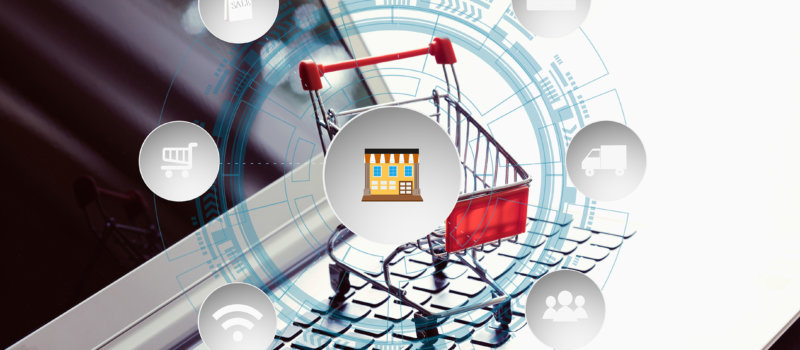The way your business interacts with customers defines the customer experience (CX). From promotional messaging to customer support and bill and payment notifications, every customer communication is an opportunity to boost CX.
Seamless, on-trend communications and a multi-channel experience win the day. But with both technology and consumer habits changing, the reality is, it’s hard to keep up with expectations and continually deliver the best possible experience.
And if your business lags behind with the wrong customer communication channels or an ineffective strategy, you’re going to fall flat when it comes to customer experience, customer service, and customer loyalty.
To help you get ahead, let’s take a look at the future of customer communication. These are the four channels and approaches your business should consider implementing.
1. Next-Gen Contact Center Support
Gone are the days when customers will put up with long wait times when they call into your call center. The modern contact center runs like a well-oiled machine.
And for good reason – in the U.S., about one in five customers will abandon your brand after one bad experience. And after several customer service hiccups, nearly 60 percent will stop interacting with your brand.

So what does next-gen contact center support look like?
Here’s what you should be able to offer every time a customer calls in and the tools you need to make it happen:
- Minimal wait times – with contact center software that answers customers in sequence, your agents can work through call queues faster. Also, advanced capabilities like callbacks give the customer the option to not have to wait on the phone until an agent is ready.
- Smart routing – instead of having your agents re-route the calls, a smart routing system gets the customer to the right agent from the get-go.
- Consistent service – when contact center managers have real-time insights into agent-customer interactions, they can ensure the entire team is on the same page.
- Up-to-date interactive voice response (IVR) messaging – when you can customize your IVR in minutes, you can refine your communications any time it will help to build value or enhance the customer relationship. For example, when you want your customers to know about a recent change, or when you want to create different call flows.
- Happy agents – with better reporting and analytics, managers have the insights they need to upskill agents and to improve scheduling – which can help to improve the employee experience. And, happier agents can translate into more positive experiences for customers.
2. Omnichannel Creates More Convenience
Omnichannel has been an important part of customer communication strategies for a few years now – from 2010 to 2020, PwC found that the percentage of companies investing in omnichannel experiences had jumped from 20 percent to 80 percent.
But, the level of consistency and convenience has changed.
With omnichannel communications, customers have the same experience whether they are shopping in-store or online. They can move from one channel to another and expect the same relationship with the brand.
As mobile communications and the use of features like chat messaging and video meetings has increased, there are now more staple channels to include in an omnichannel strategy. Customers don’t just want ecommerce and in-store shopping to be seamless. They want SMS messages on their phones for time-sensitive offers, personalized email messaging, and richer digital experiences, such as webinar events and video, as well as in-store digital experiences.
They should also be able to access all channels from any device. For example, they should be able to click on an in-app offer or text message to activate a deal for the next time they purchase from your business in-person, by phone, or online. And, when they need to contact the company, they should have the ability to reach out on their preferred channel, whether that’s chat, voice, or email.

3. Personal Customer Portals
More technology and more channels lead to more complexity. But the goal of your customer communication strategy is to simplify things for the customer.
How can you balance complexity with the need to streamline?
One way businesses are offering an in-depth yet varied communications experience – without sacrificing simplicity – is to create a one-stop-shop customer portal.
With a customer portal, your customers can log in and see past transactions, interaction history, personalized offers, and plan or account information. They also have the ability to take certain actions, such as making a payment, contacting support, or making a purchase.
This single source of truth from the customer’s end brings all the multi-channel, multi-option information together in one place so they don’t have to worry about keeping track of their information themselves.
4. Richer Data Analysis
Another way to ensure your business can meet tomorrow’s customer communication expectations is to lean more into data.
The more insights your teams have as to what your customers want, what type of interactions they prefer, what channels they choose, and what devices they use, the more equipped sales, marketing, and customer service managers are to make smarter communications decisions.
Getting to this point involves using communications solutions that provide ongoing reports that reveal information on CX and customer loyalty. You also want to rely on integrated tools so your users have the same customer data, whether they are operating from your contact center tool, your communications software, or customer-facing software.
Get Ready for the Future, Today
The future of customer communications is customer-centric. Your channel strategy should offer convenience, simplicity, and versatility, all in a way that delights your customer base and ensures top-quality customer service with every interaction.
Intermedia can help you get started with communications tools that enable businesses to do more for customers, all while increasing efficiency and security. Learn more about our cloud communications solutions.
March 14, 2022
Explore other posts on these topics: Contact Center




